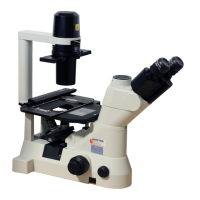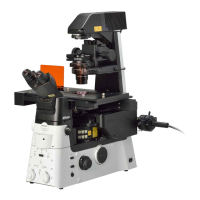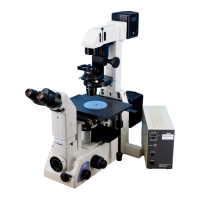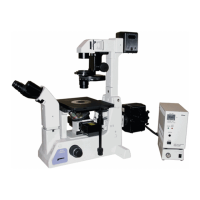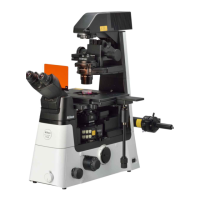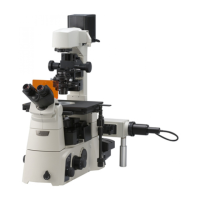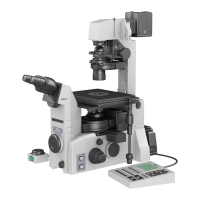E-23
Operation of Each Part
4
1
Aperture Diaphragm
The aperture diaphragm adjusts the numerical
aperture (N.A.) of the illumination system.
Aperture of this diaphragm determines optical
resolution, brightness, contrast, and depth of focus.
Narrowing down the aperture diaphragm decreases
resolution and brightness, and increases contrast
and depth of focus. Because these characteristics
are interrelated and cannot be controlled one by
one, the aperture must be adjusted for each
specimen and application.
Adjustment of the aperture diaphragm is especially
important for bright-field microscopy, differential
interference contrast microscopy, and
photomicrography. Generally, aperture settings of
70 to 80% of the objective N.A. yield good images
of appropriate contrast.
Adjust the aperture of the diaphragm while actually
observing the diaphragm image through the
eyepiece tube. Leftward rotation of the aperture
diaphragm lever stops down the diaphragm.
Rightward rotation opens it.
Remove one eyepiece, then insert the centering
telescope. Hold the flange of the centering
telescope with one hand and rotate its eyepiece for
focusing. The images of the objectives exit pupil
(appears bright round) and the aperture diaphragm
become visible. (If the image of the aperture
diaphragm is not seen, stop down the aperture
diaphragm further.) While observing these images,
adjust the aperture diaphragm lever until the
aperture of the diaphragm reaches 70 to 80% of
the exit pupil of the objective.
Be sure to always fully open the aperture
diaphragm when performing phase contrast
microscopy. If the aperture diaphragm is closed, it
will obstruct the annular diaphragm and the phase
contrast effects cannot be obtained.
Be sure to always fully open the aperture
diaphragm when performing NAMC microscopy. If
the aperture diaphragm is closed, it will obstruct
the slit diaphragm and a proper image cannot be
obtained.
The appropriate size of the aperture
diaphragm
Centering
telescope
Flange
Eyepiece
Condenser aperture diaphragm lever

